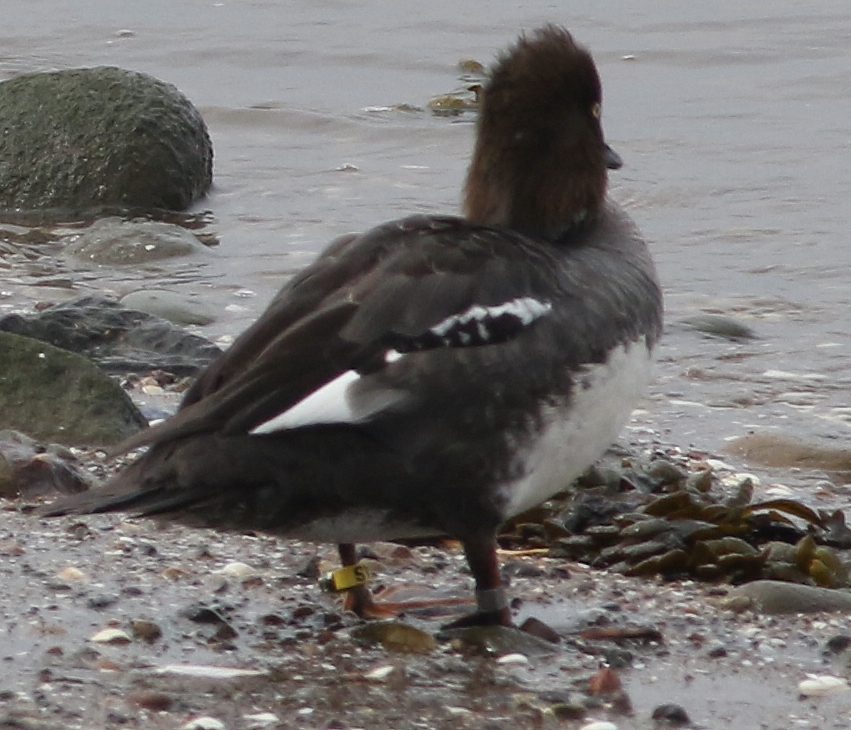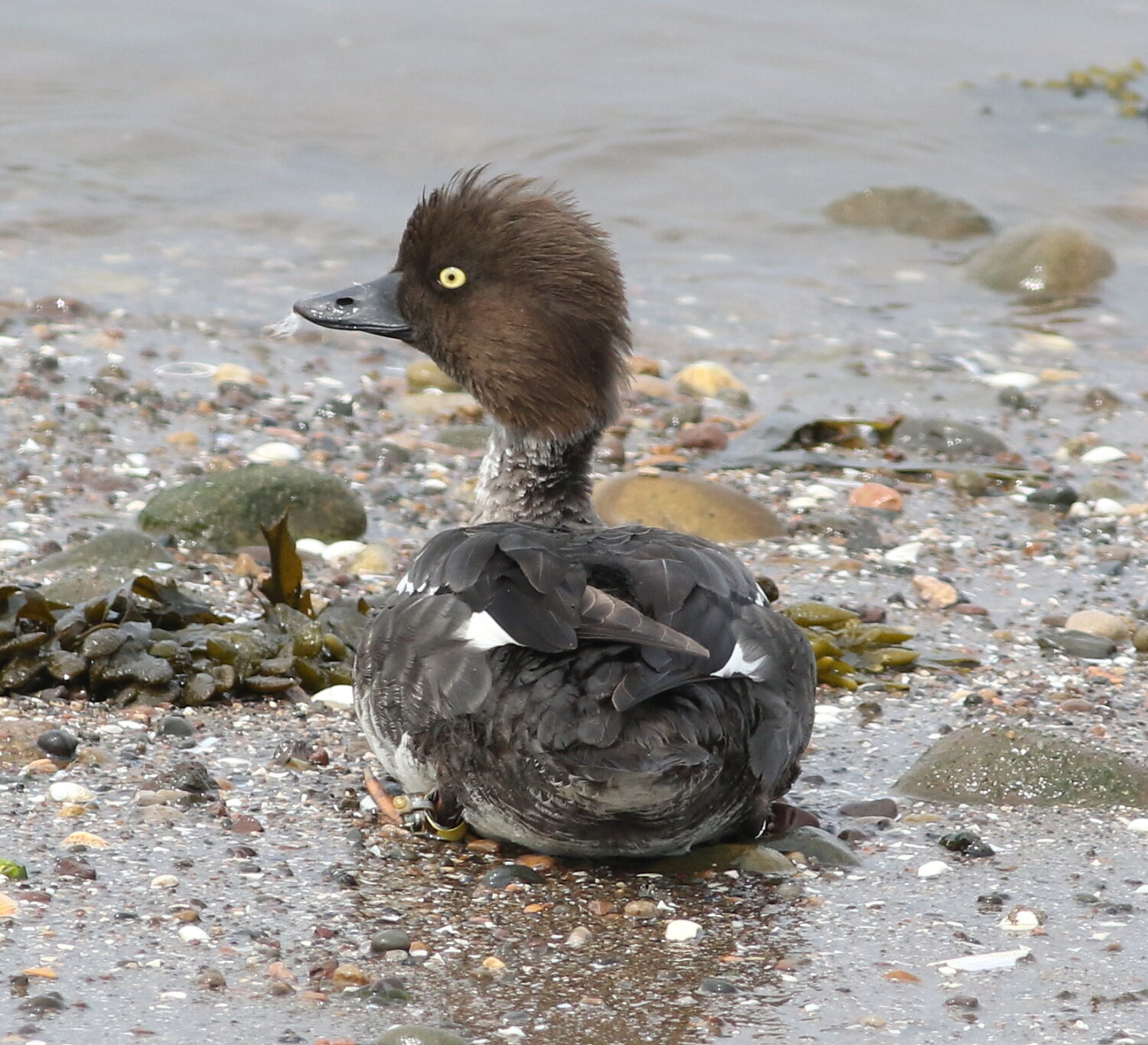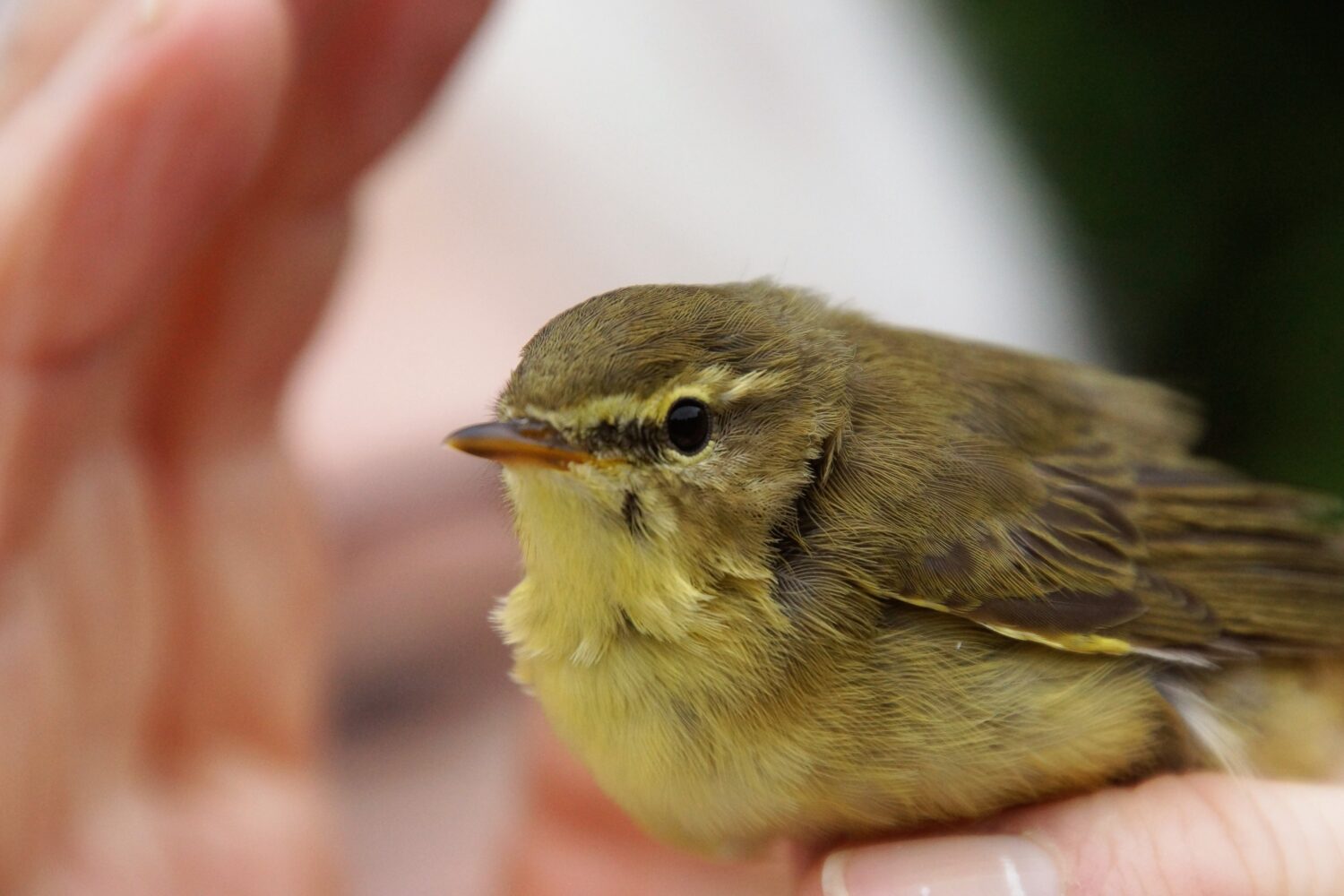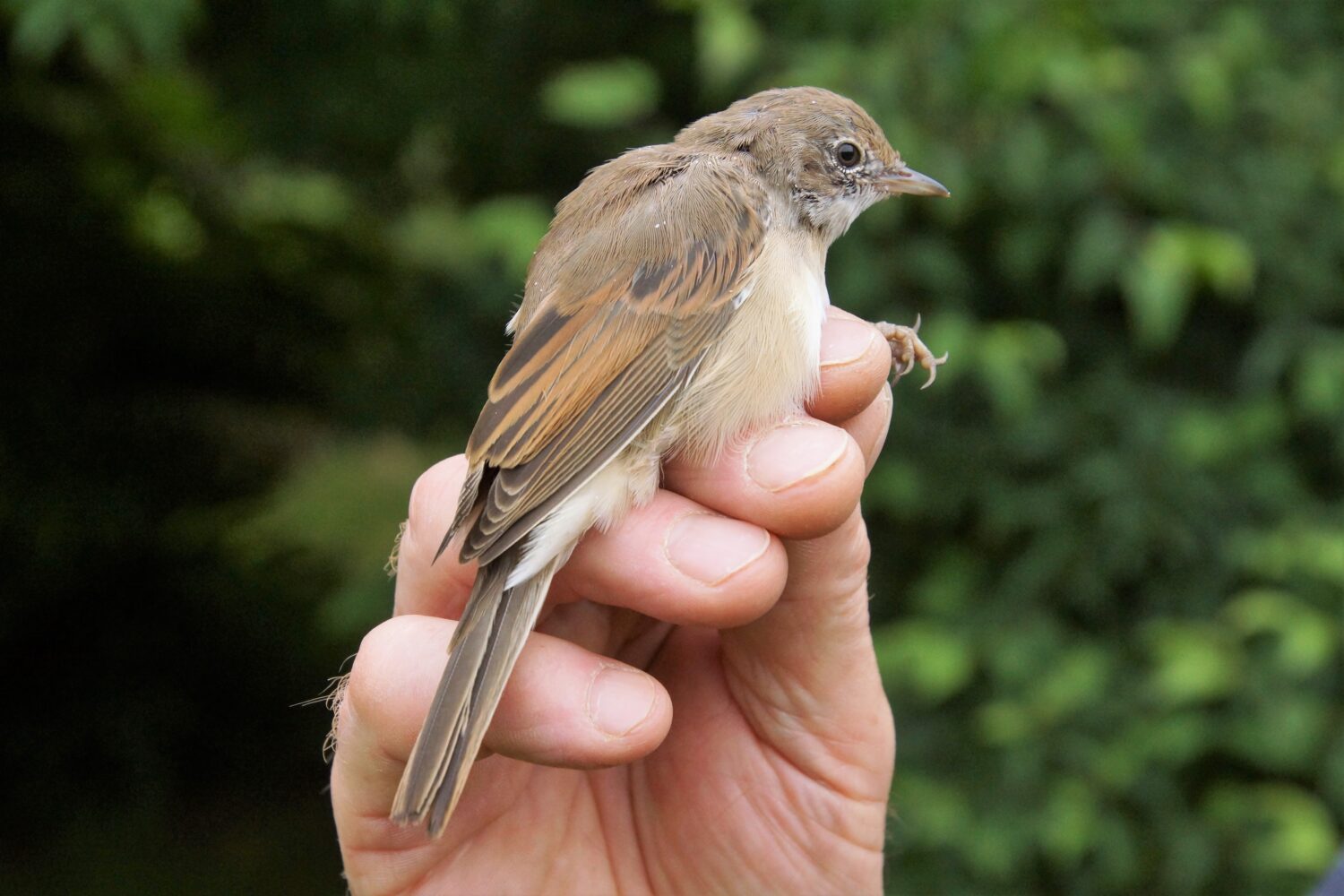North East ornithologist, Phil Hanmer, shares a new update summarising bird ringing across Northumberland throughout August.
I recently received a surprise e-mail from a birder up near Edinburgh who had been watching (and photographing) a female Goldeneye duck at Musselburgh Nature. He asked me if this duck with its coloured darvic ring and attached Geo-logger was one of mine from the North Northumberland colony. I was able to tell him it was and that it was duck ‘FH92098’ carrying a logger on the AS darvic ring. Up to this point he had been unable to actually see the letter code. However, I had realised that this must be this particular duck because it was the only one carrying a logger out of 9 deployed that I had been unable to retrieve for computer processing! Eventually, through the wonders of digital photography Ian Andrews was able to find a picture in which its possible to see the upside-down code AS!
My records tell me that this bird probably tried to nest and failed in 2016; then tried again in 2017 and hatched 10 ducklings. She repeated this in 2018 hatching another 10 ducklings but has failed to return to any of my nest boxes/sites since. Luckily, she did have an earlier logger attached in 2017 which was retrieved in 2018 and from the analysis of this we know that she did some interesting travelling during that year; which included some time near Musselburgh. I am currently working up a presentation about this – the only colony of breeding Goldeneye duck in England but duck AS’s movements over the last few years will remain a mystery unless she comes home to have her logger retrieved!
Another more usual return from a ringed bird arrived from the British Trust for Ornithology this month; this was of a road casualty Goldfinch (ANF7436) picked up near Cullernose Pt. This bird had been ringed as an adult on the 3 October 2019 at Howick; so was at least 3 years old. Moving onto this year’s ringing at Howick it has to be said that we have had quite a bit of troublesome wind and rain but we have managed a few sessions in August. On the 15 August, we caught 36 birds (27 new and 9 retraps) including Chaffinch, Robin, Coal, Blue and Great Tit, Wren, Bullfinch and a single adult Goldfinch in full Main Moult – its feathers were in such a sad state it’s a wonder it could still fly. All these are local all-year-round residents but there was also a juvenile Chiffchaff not yet ready to migrate south. Other migratory warblers included a very nice Willow Warbler, still a juvenile of the year but clearly an older bird than the chiffchaff already on its migration south (see photo), and a Whitethroat which was quite young and probably local. When the Whitethroat gets going it will probably go to West Africa and east to Sudan in the semi-arid northern Sahel zone.
Ringing again on the 20 August, we only caught 22 birds but the variety was interesting; included in the retraps was an adult Chiffchaff (HYE458) that had been ringed, as a juvenile, at Howick back in July 2018. So, while we don’t know exactly where he has been, its very likely that this bird has had three winter breaks in the Senegambia region of Africa, south of the Sahara. The new birds included more migrants including a juvenile Garden Warbler, a Blackcap and three more Chiffchaffs. Turning to the resident birds we had a fly-by of a small flock of Mistle Thrush and captured two of these impressive birds. These were undoubtedly locals and not early Scandinavian immigrants as they were still very obviously juvenile (see photo). We also captured two House Sparrows (not a usual bird for the Howick Arboretum) my supposition is that they were taking a shortcut from bird feeders in Howick Village to others nearer the Hall! Ageing sparrows always gives ringers a problem; since young sparrows do a full Main Moult even when juvenile; hence it quickly becomes difficult to tell the juveniles from the adults! We eventually concluded that one of these was an adult female due to evidence of a brood patch, but we had to leave the other (a male) with an uncertain age.
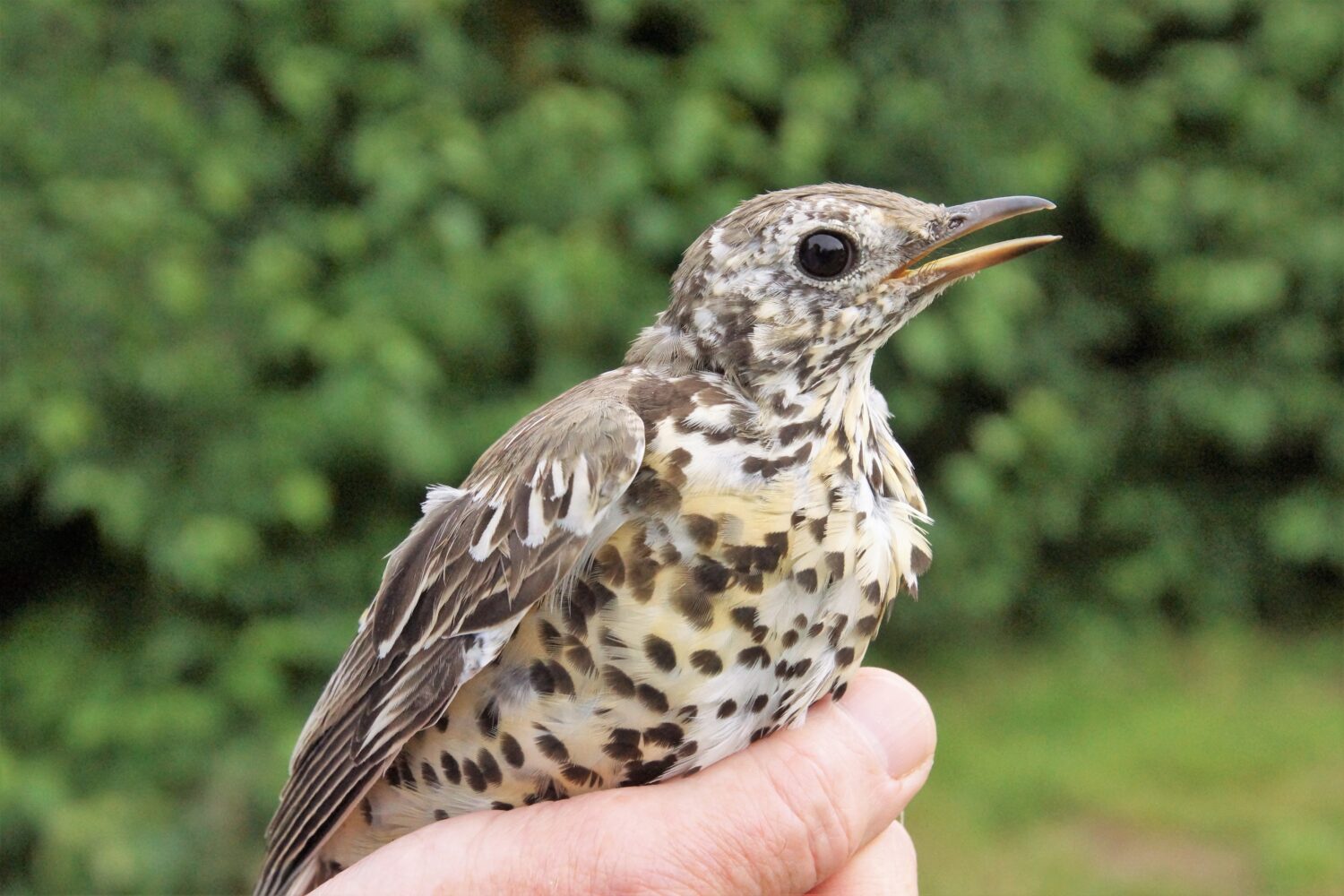
Ringing was next possible on 28 August when we might have anticipated an early ‘fall’ of migrants due to forecast overcast and damp conditions. Indeed visiting the site the evening before showed a large number of Goldcrest in the trees and bushes but overnight the weather changed and the 28th dawned bright and clear (and rapidly warmed up). The result was that the goldcrests had moved on and few new birds had arrived. We did capture 20 new birds and 4 retraps. One of the retraps was a female Great Tit first ringed in 2016, so at least 6 years old. The new birds included a variety of the resident tits, Wrens, Bullfinch, Chaffinch and also Goldcrests. There were also migrants including another juvenile Whitethroat (but an older bird than that from the 15 August) moving from further north having started its migration, a similar bright new Willow Warbler; and a Blackcap.
Finally, a correction to last month’s article – some versions say that we captured two ‘jackdaws’ – this should have read Magpies.
If you would like to see the ringing at Howick Hall Arboretum just come along to the Car Park picnic benches on a Friday or Saturday morning but we won’t be there if it is particularly windy or raining.
